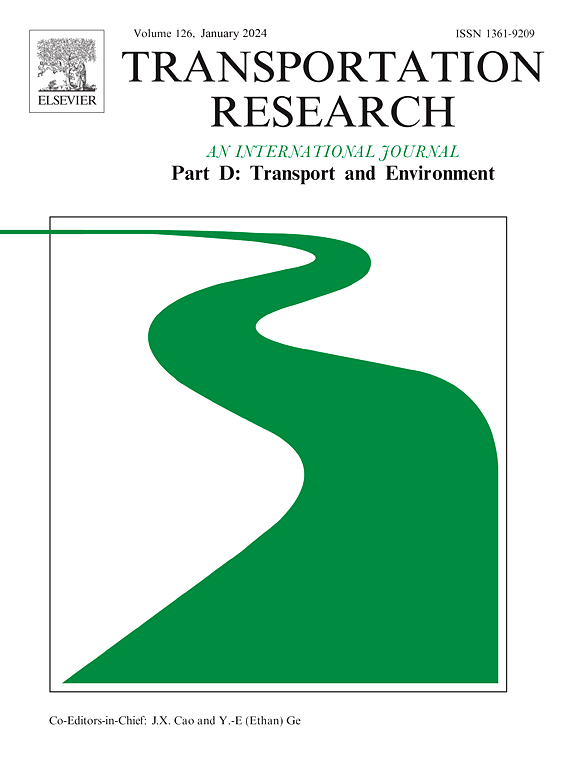Assess changes in electric vehicle usage behaviour: Comparison between 2018 and 2021
IF 7.3
1区 工程技术
Q1 ENVIRONMENTAL STUDIES
Transportation Research Part D-transport and Environment
Pub Date : 2025-02-18
DOI:10.1016/j.trd.2025.104661
引用次数: 0
Abstract
With advancements in power battery technology, all-electric driving range (AER) of electric vehicles (EVs) and charging infrastructures have improved significantly in recent years. These improvements may change usage behaviour and reduce range anxiety. Herein, this paper collects nearly 90,000 EV real-world operation data in 2018 and 2021. EV travel and plug-in habits are analysed with descriptive analytical methods and statistical tests. Range anxiety is also assessed using the ordinary least squares algorithm. The results show a 15 % rise in daily distances for electric taxis, alongside a 26.5 % increase in AER and a 29.9 % increase in charging power. In contrast, personal EV travel distance shows little change, despite a 50.8 % increase in AER and a 13.9 % increase in charging power. The results also indicate that as charging power increases, there is a significant decline in range anxiety calculated by the state-of-charge before charging, a trend not observed with increasing AER.
评估电动汽车使用行为的变化:2018年和2021年的比较
近年来,随着动力电池技术的进步,电动汽车的全电动续驶里程(AER)和充电基础设施得到了显著改善。这些改进可能会改变使用行为,减少里程焦虑。本文收集了2018年和2021年近9万辆电动汽车的真实运行数据。采用描述性分析方法和统计检验对电动汽车出行和插电习惯进行了分析。距离焦虑也使用普通最小二乘算法进行评估。结果显示,电动出租车的日行驶距离增加了15%,AER增加了26.5%,充电功率增加了29.9%。相比之下,尽管AER增加了50.8%,充电功率增加了13.9%,但个人电动汽车的行驶距离变化不大。结果还表明,随着充电功率的增加,充电前充电状态计算的里程焦虑显著下降,但随着AER的增加,没有观察到这种趋势。
本文章由计算机程序翻译,如有差异,请以英文原文为准。
求助全文
约1分钟内获得全文
求助全文
来源期刊
CiteScore
14.40
自引率
9.20%
发文量
314
审稿时长
39 days
期刊介绍:
Transportation Research Part D: Transport and Environment focuses on original research exploring the environmental impacts of transportation, policy responses to these impacts, and their implications for transportation system design, planning, and management. The journal comprehensively covers the interaction between transportation and the environment, ranging from local effects on specific geographical areas to global implications such as natural resource depletion and atmospheric pollution.
We welcome research papers across all transportation modes, including maritime, air, and land transportation, assessing their environmental impacts broadly. Papers addressing both mobile aspects and transportation infrastructure are considered. The journal prioritizes empirical findings and policy responses of regulatory, planning, technical, or fiscal nature. Articles are policy-driven, accessible, and applicable to readers from diverse disciplines, emphasizing relevance and practicality. We encourage interdisciplinary submissions and welcome contributions from economically developing and advanced countries alike, reflecting our international orientation.

 求助内容:
求助内容: 应助结果提醒方式:
应助结果提醒方式:


